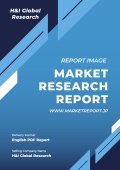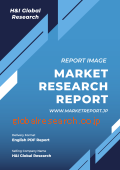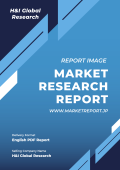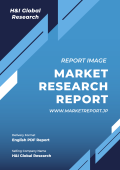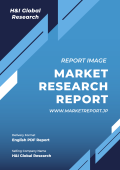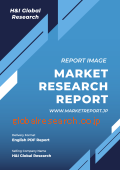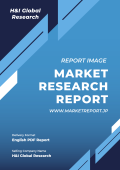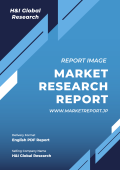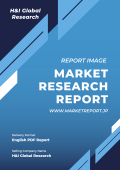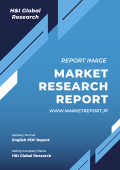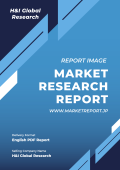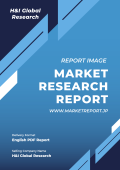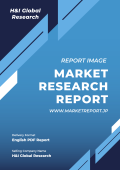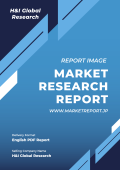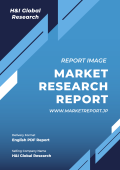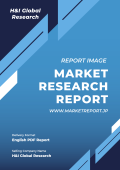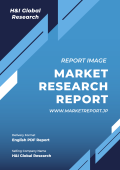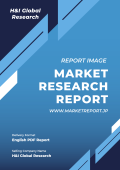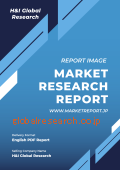| ■ 英語タイトル:DNA and Gene Cloning Services Market (Product Type: Gene Synthesis, Custom Cloning, Sub-cloning and Others; Application: DNA Sequencing, Mutagenesis, and Genotyping) - Global Industry Analysis, Size, Share, Growth, Trends, and Forecast, 2022-2031
|
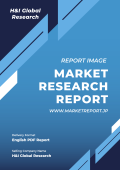 | ■ 発行会社/調査会社:Transparency Market Research
■ 商品コード:TMR23JN055
■ 発行日:2022年10月25日
■ 調査対象地域:グローバル
■ 産業分野:医療
■ ページ数:150
■ レポート言語:英語
■ レポート形式:PDF
■ 納品方式:Eメール(受注後24時間以内)
|
■ 販売価格オプション
(消費税別)
※販売価格オプションの説明はこちらで、ご購入に関する詳細案内はご利用ガイドでご確認いただけます。
※お支払金額は「換算金額(日本円)+消費税+配送料(Eメール納品は無料)」です。
※Eメールによる納品の場合、通常ご注文当日~2日以内に納品致します。
※レポート納品後、納品日+5日以内に請求書を発行・送付致します。(請求書発行日より2ヶ月以内の銀行振込条件、カード払いも可能)
※Transparency Market Research社の概要及び新刊レポートはこちらでご確認いただけます。
| ★グローバルリサーチ資料[DNA・遺伝子クローニングサービスの世界市場2022~2031:製品種類別、用途別]についてメールでお問い合わせはこちら
|
*** レポート概要(サマリー)***Transparency Market Research社の市場調査資料では、世界のDNA・遺伝子クローニングサービス市場を広く調査・分析し、序論、仮定・調査手法、エグゼクティブサマリー、市場概要、主要インサイト、製品種類別(遺伝子合成、カスタムクローニング、サブクローニング、その他)分析、用途別(DNAシークエンシング、変異誘発、ジェノタイピング、その他)分析、エンドユーザー別(学術・研究機関、製薬・バイオテクノロジー企業、その他)分析、地域別(北米、ヨーロッパ、アジア太平洋、中南米、中東・アフリカ)分析、競争状況など、以下の構成でのまとめています。さらに、本調査資料には、Aragen Life Sciences、Bio-Techne、Charles River Laboratories、Curia、Eurofins、GenScript、Integrated DNA Technologies、MedGenome、Sino Biological、Syngene、Twist Bioscienceなどの企業情報が記載されています。
・序論
・仮定・調査手法
・エグゼクティブサマリー
・市場概要
・主要インサイト
・世界のDNA・遺伝子クローニングサービス市場規模:製品種類別
- 遺伝子合成の市場規模
- カスタムクローニングの市場規模
- サブクローニングの市場規模
- その他DNA・遺伝子クローニングサービスの市場規模
・世界のDNA・遺伝子クローニングサービス市場規模:用途別
- DNAシークエンシングにおける市場規模
- 変異誘発における市場規模
- ジェノタイピングにおける市場規模
- その他用途における市場規模
・世界のDNA・遺伝子クローニングサービス市場規模:エンドユーザー別
- 学術・研究機関における市場規模
- 製薬・バイオテクノロジー企業における市場規模
- その他エンドユーザーにおける市場規模
・世界のDNA・遺伝子クローニングサービス市場規模:地域別
- 北米のDNA・遺伝子クローニングサービス市場規模
- ヨーロッパのDNA・遺伝子クローニングサービス市場規模
- アジア太平洋のDNA・遺伝子クローニングサービス市場規模
- 中南米のDNA・遺伝子クローニングサービス市場規模
- 中東・アフリカのDNA・遺伝子クローニングサービス市場規模
・競争状況 |
DNA and Gene Cloning Services Market – Scope of Report
TMR’s report on the global DNA and gene cloning services market studies the past as well as the current growth trends and opportunities to gain valuable insights of the indicators of the market during the forecast period from 2022 to 2031. The report provides revenue of the global DNA and gene cloning services market for the period 2017–2031, considering 2021 as the base year and 2031 as the forecast year. The report also provides the compound annual growth rate (CAGR %) of the global DNA and gene cloning services market from 2022 to 2031.
The report has been prepared after an extensive research. Primary research involved bulk of the research efforts, wherein analysts carried out interviews with key opinion leaders, industry leaders, and opinion makers. Secondary research involved referring to key players’ product literature, annual reports, press releases, and relevant documents to understand the DNA and gene cloning services market.
Secondary research also included Internet sources, statistical data from government agencies, websites, and trade associations. Analysts employed a combination of top-down and bottom-up approaches to study various attributes of the global DNA and gene cloning services market.
The report includes an elaborate executive summary, along with a snapshot of the growth behavior of various segments included in the scope of the study. Moreover, the report sheds light on the changing competitive dynamics in the global DNA and gene cloning services market. These serve as valuable tools for existing market players as well as for entities interested in participating in the global DNA and gene cloning services market.
The report delves into the competitive landscape of the global DNA and gene cloning services market. Key players operating in the global DNA and gene cloning services market have been identified and each one of these has been profiled, in terms of various attributes. Company overview, financial standings, recent developments, and SWOT are attributes of players in the global DNA and gene cloning services market profiled in this report.
RESEARCH METHODOLOGY
The research methodology will be a combination of exhaustive primary and secondary research to analyze the market DNA and gene cloning services .
Secondary Research
Secondary research includes a search of company literature, technical writing, patent data, Internet sources, and statistical data from government websites, trade associations, and agencies. This has proven to be the most reliable, effective, and successful approach for obtaining precise data, capturing industry participants’ insights, and recognizing business opportunities.
Secondary research sources that we typically refer, but are not limited to:
Company websites, presentations, annual reports, white papers, technical paper, product brochure
Internal and external proprietary databases and relevant patents
National government documents, statistical databases, and market reports
News articles, press releases, and webcasts specific to companies operating in the market
Specific Secondary Sources:
Industry Sources:
WorldWideScience.org
Elsevier, Inc.
National Institutes of Health (NIH)
PubMed
NCBI
Department of Health Care Service
Trade Data Sources
Trade Map
UN Comtrade
Trade Atlas
Company Information
OneSource Business Browser
Hoover’s
Factiva
Bloomberg
Mergers & Acquisitions
Thomson Mergers & Acquisitions
MergerStat
Profound
Primary Research
During the course of research, we conduct in-depth interviews and discussions with a wide range of key industry participants and opinion leaders. Primary research represents bulk of research efforts, supplemented by extensive secondary research.
We conduct primary interviews on the ongoing basis with industry participants and commentators to validate data and analysis. A typical research interview fulfills the following functions:
Provides first-hand information on market size, market trends, growth trends, competitive landscape, outlook, etc.
Helps in validating and strengthening secondary research findings
Further develops the analysis team’s expertise and market understanding
Primary research involves e-mail interactions, telephonic interviews, as well as face-to-face interviews for each market, category, segment, and sub-segment across geographies
Participants who typically take part in such a process include, but are not limited to:
Industry participants: Marketing/product managers, market intelligence managers, and regional sales managers
Purchasing/Sourcing managers, technical personnel, distributors
Outside experts: Investment bankers, valuation experts, and research analysts specializing in specific markets
Key opinion leaders specializing in different areas corresponding to different industry verticals
List of primary participants, but not limited to:
Advanced Oncotherapy PLC
Danfysik A/S
Hitachi, Ltd.
IBA Worldwide
Mevion Medical Systems, Inc.
Data Triangulation: Information culled from “Secondary & Primary Sources” is cross-checked with “TMR Knowledge Repository”, which is updated every quarter.
Market Estimation: Market size estimations involved in-depth study of product features, technology updates, geographic presence, product demand, sales data (value or volume), historical year-on-year growth, and others. Other approaches were also utilized to derive market size and forecasts. Where no hard data was available, we employed modeling techniques in order to produce comprehensive datasets. A rigorous methodology has been adopted, wherein the available hard data are cross-referenced with the following data types to produce estimates:
Demographic Data: Healthcare expenditure, inflation rates, and others
Industry Indicators: R&D investment, technology stage, and infrastructure, sector growth, and facilities
Market Forecasting: Market forecasts for various segments are derived taking into account drivers, restraints/challenges, and opportunities prevailing in the market and considering advantages/disadvantages of segments/sub-segments over other segments/sub-segments. Business environment, historical sales pattern, unmet needs, competitive intensity, and country-wise surgery data are some of the other pivotal factors, which are considered to derive market forecasts.
DNA and Gene Cloning Services Market – Scope of Report
TMR’s report on the global DNA and gene cloning services market studies the past as well as the current growth trends and opportunities to gain valuable insights of the indicators of the market during the forecast period from 2022 to 2031. The report provides revenue of the global DNA and gene cloning services market for the period 2017–2031, considering 2021 as the base year and 2031 as the forecast year. The report also provides the compound annual growth rate (CAGR %) of the global DNA and gene cloning services market from 2022 to 2031.
The report has been prepared after an extensive research. Primary research involved bulk of the research efforts, wherein analysts carried out interviews with key opinion leaders, industry leaders, and opinion makers. Secondary research involved referring to key players’ product literature, annual reports, press releases, and relevant documents to understand the DNA and gene cloning services market.
Secondary research also included Internet sources, statistical data from government agencies, websites, and trade associations. Analysts employed a combination of top-down and bottom-up approaches to study various attributes of the global DNA and gene cloning services market.
The report includes an elaborate executive summary, along with a snapshot of the growth behavior of various segments included in the scope of the study. Moreover, the report sheds light on the changing competitive dynamics in the global DNA and gene cloning services market. These serve as valuable tools for existing market players as well as for entities interested in participating in the global DNA and gene cloning services market.
The report delves into the competitive landscape of the global DNA and gene cloning services market. Key players operating in the global DNA and gene cloning services market have been identified and each one of these has been profiled, in terms of various attributes. Company overview, financial standings, recent developments, and SWOT are attributes of players in the global DNA and gene cloning services market profiled in this report.
RESEARCH METHODOLOGY
The research methodology will be a combination of exhaustive primary and secondary research to analyze the market DNA and gene cloning services .
Secondary Research
Secondary research includes a search of company literature, technical writing, patent data, Internet sources, and statistical data from government websites, trade associations, and agencies. This has proven to be the most reliable, effective, and successful approach for obtaining precise data, capturing industry participants’ insights, and recognizing business opportunities.
Secondary research sources that we typically refer, but are not limited to:
Company websites, presentations, annual reports, white papers, technical paper, product brochure
Internal and external proprietary databases and relevant patents
National government documents, statistical databases, and market reports
News articles, press releases, and webcasts specific to companies operating in the market
Specific Secondary Sources:
Industry Sources:
WorldWideScience.org
Elsevier, Inc.
National Institutes of Health (NIH)
PubMed
NCBI
Department of Health Care Service
Trade Data Sources
Trade Map
UN Comtrade
Trade Atlas
Company Information
OneSource Business Browser
Hoover’s
Factiva
Bloomberg
Mergers & Acquisitions
Thomson Mergers & Acquisitions
MergerStat
Profound
Primary Research
During the course of research, we conduct in-depth interviews and discussions with a wide range of key industry participants and opinion leaders. Primary research represents bulk of research efforts, supplemented by extensive secondary research.
We conduct primary interviews on the ongoing basis with industry participants and commentators to validate data and analysis. A typical research interview fulfills the following functions:
Provides first-hand information on market size, market trends, growth trends, competitive landscape, outlook, etc.
Helps in validating and strengthening secondary research findings
Further develops the analysis team’s expertise and market understanding
Primary research involves e-mail interactions, telephonic interviews, as well as face-to-face interviews for each market, category, segment, and sub-segment across geographies
Participants who typically take part in such a process include, but are not limited to:
Industry participants: Marketing/product managers, market intelligence managers, and regional sales managers
Purchasing/Sourcing managers, technical personnel, distributors
Outside experts: Investment bankers, valuation experts, and research analysts specializing in specific markets
Key opinion leaders specializing in different areas corresponding to different industry verticals
List of primary participants, but not limited to:
Advanced Oncotherapy PLC
Danfysik A/S
Hitachi, Ltd.
IBA Worldwide
Mevion Medical Systems, Inc.
Data Triangulation: Information culled from “Secondary & Primary Sources” is cross-checked with “TMR Knowledge Repository”, which is updated every quarter.
Market Estimation: Market size estimations involved in-depth study of product features, technology updates, geographic presence, product demand, sales data (value or volume), historical year-on-year growth, and others. Other approaches were also utilized to derive market size and forecasts. Where no hard data was available, we employed modeling techniques in order to produce comprehensive datasets. A rigorous methodology has been adopted, wherein the available hard data are cross-referenced with the following data types to produce estimates:
Demographic Data: Healthcare expenditure, inflation rates, and others
Industry Indicators: R&D investment, technology stage, and infrastructure, sector growth, and facilities
Market Forecasting: Market forecasts for various segments are derived taking into account drivers, restraints/challenges, and opportunities prevailing in the market and considering advantages/disadvantages of segments/sub-segments over other segments/sub-segments. Business environment, historical sales pattern, unmet needs, competitive intensity, and country-wise surgery data are some of the other pivotal factors, which are considered to derive market forecasts.
*** 免責事項 ***https://www.globalresearch.co.jp/disclaimer/
